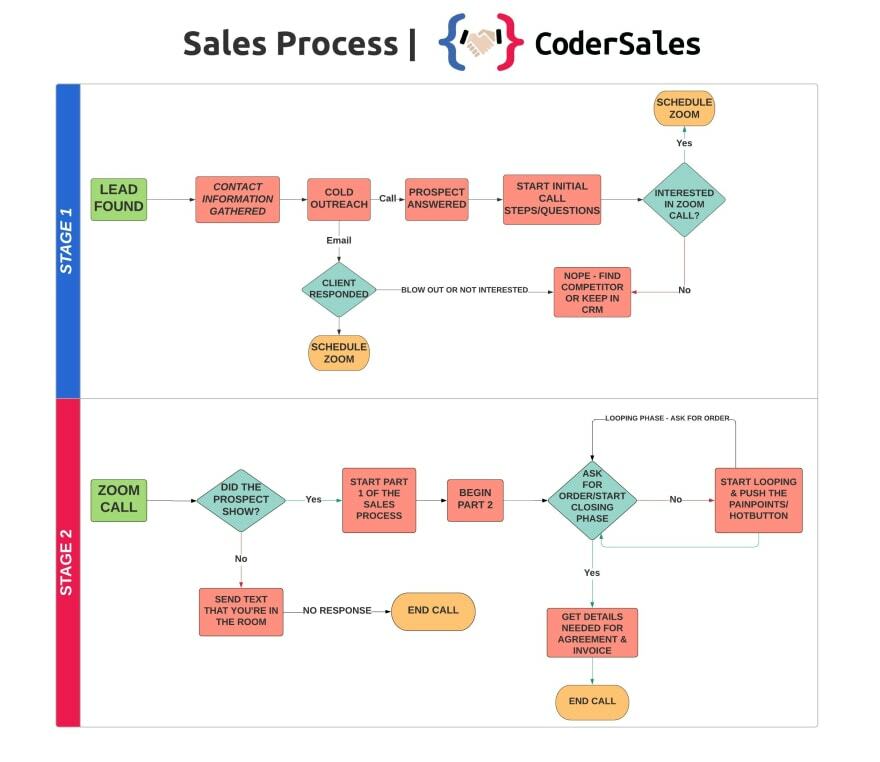OL' GIL
He's a hardworking guy. But, he fell on hard times and never recovered; he never got back to basics and just grinds it out hoping to see change. He doesn't work smart.
Don't be like Gil. The desperate commission breath reeks of low status & neediness. Flip the dynamics in your favor and control the sales cycle. Have a repeatable proven framework in place to follow and get results. In this part 2/2, we're going to go over how to control a presentation, build value and ultimately close the deal AND ensure payment. 
STAGE 2
So you have an interested party, they are the decision maker and recognize the value of what your skillset can bring. Great. You're 50% there. Be sure (from the previous Stage) that they have booked a time on your Calendly and answered the qualifying questions. Now, to ensure a high % show up rate, you should have an automation sequence setup with Calendly (reminders) that have at least 1 prior job completed with measurable results. That way, it warms up the client and they at least lower some of their perceived risk with you before the Zoom call even starts.

DID THEY SHOW?
First thing first, you should be ready at least 15 minutes prior to the meeting with all the open tabs you need loaded. Have their website, the SEMrush data, the keywords they want to rank for, your process in place and results to show. Start the meeting 5 minutes before the scheduled time. If they don't show 10 minutes after the scheduled time to start, send them a text (you should have their cell number from Calendly) with the Zoom room link. If yes, => Part 1.
PART 1
Ask good questions and be a detective. How is the website currently being handled? Are there internal KPIs setup and how do updates happen? Who makes the updates? Who decides the updates? Be interested in the company and what they're doing. If you get any CEO on the line and ask good questions, they WILL give you good answers. You should be writing those down as fast as you can. Take as many notes as possible and keep mental notes and voice inflection until you find their 'hot button'. This is what will make them move. It could be that a competitor is out ranking them (this is why you should have SEMrush up) or sales are down or even a new product launch in the near future. Whatever it is, it's up to you to find and you achieve that by asking questions. 
PART 2
This is when you have enough information about the company, website and objectives to provide them something of value. Share your screen and go over their data (SEMrush) and show how their design is outdated and/or inefficient. Look at competitors and what they're doing. Show your ideas here and how it helps them promote XYZ. Use the information gathered from Part 1 here and demonstrate how you can help. What is holding them back? Solve that problem for them. Show. Your. Process. They'll probably want to see an old wireframe so show them that then the 'after' and the results that brought for the client.

THE CLOSE
Here it is. They're agreeing with you through your presentation/screen share and are on board with what you have. You ask them, "Can you see why this process is so effective?" that right there, boys and girls is the trial close. If they say "yes" which they should because you're prepared, have a process in place and can effectively communicate it, you then show them your pricing. Have 3 options ready to go based on their budget discussion from the first phone call. This will take some practice, but once you get this down, you'll be seeing the $$$$$ come in quick. So once the pricing portion comes, they will reply with something like "what results will I see" etc. Address that and hit their hot button(s) you uncovered from Part 1. This is called looping. So for a new web design client, they could have a new product coming out and you'll dedicate a product page and testimonial page, for example. DO NOT BRING UP THE CODING LANGUAGE unless they do. They most likely have no clue and you're just going to bore/confuse them. And the confused mind always passes. Focus on the increase of traffic, conversions and revenues this will bring them.

DEAL!
They agree. Boom! You're 95% there. Get their contact information for the agreement (DO NOT SAY CONTRACT) and send it over for their signature. State that the payment terms in the Statement of Work as follows: 50% down to fund the project, then 40% after the initial wire framing to start the development phase THEN the remaining 10% before deployment. This way you get more $$ sooner and you're protected if they ghost you. Which will happen at some point. Develop everything on a staging domain so they must pay you before migration & deployment. Also, do not get started until they pay. Ask how they will pay you (credit card/check/ACH) and if need be set up Stripe then send the invoice. The project isn't real until the money is in your bank account. I've been burned before (I think we all have) in the past and I'll never start a project just on verbal confirmation again. Get it in writing & make them authorize the first invoice.

![Cover image for [Workflow/Pics] Use this process when freelancing to land high paying clients - Part 2/2](https://media2.dev.to/dynamic/image/width=1000,height=420,fit=cover,gravity=auto,format=auto/https%3A%2F%2Fdev-to-uploads.s3.amazonaws.com%2Fuploads%2Farticles%2F8inf85axsmb54lf8w2o2.jpg)






Top comments (0)